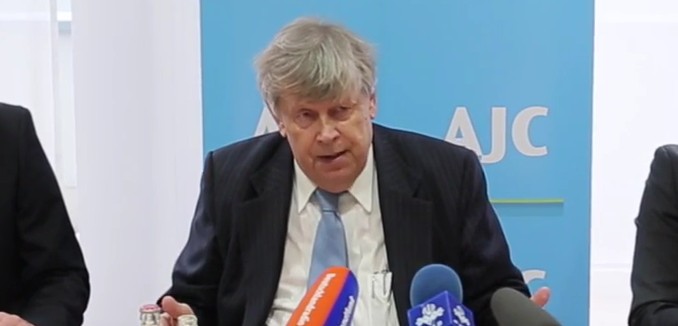Iran’s role in inspecting its military facility and suspected nuclear site at Parchin, which was detailed in a recently leaked draft of a side agreement between the International Atomic Energy Agency (IAEA) and the Islamic Republic, departs “significantly from well-established and proven safeguards practices,” according to an analysis (.pdf) by Olli Heinonen, the former deputy director-general of the IAEA, that was published this week.
Much of the current concerns arise from the reported arrangements worked out between the IAEA and Iran in the side documents to address PMD issues. If the reporting is accurate, these procedures appear to be risky, departing significantly from well-established and proven safeguards practices. At a broader level, if verification standards have been diluted for Parchin (or elsewhere) and limits imposed, the ramification is significant as it will affect the IAEA’s ability to draw definitive conclusions with the requisite level of assurances and without undue hampering of the verification process.
According to Heinonen, the dilution of the verification regime at Parchin, which is crucial for establishing the extent of Iran’s past nuclear work and detecting any future illicit activities, is particularly significant given that the Joint Comprehensive Plan of Action (JCPOA) will allow Iran to remain “a nuclear threshold state with a breakout time of about a year for the first ten years if the JCPOA is fully implemented.”
Parchin and the PMD issues, given their relevance to understanding how far Iran has gone towards designing a nuclear weapon and its impact on overall safeguards, mean that confidence in IAEA verification cannot be set at a lower bar than accepted in the past. The fact is that under the JCPOA, the Islamic Republic retains a sizable nuclear infrastructure with a uranium-enrichment program exceeding its practical needs. In other words, Iran remains a nuclear threshold state with a breakout time of about a year for the first ten years if the JCPOA is fully implemented. Furthermore, Iran remains in non-compliance with its non-proliferation undertakings. This makes it all the more important that the IAEA is able to establish a credible baseline to ensure that Iran has halted its PMD activities and is able to monitor and provide early warning if such activities resume.
If the parts of the leaked document and statements about Iranian sample taking at Parchin are correct, it raises questions that must be answered. Inspections are at the heart of the IAEA’s work, and the IAEA must have the opportunity to explain its decisions concerning Iran. At this stage, the said document has been judged within the IAEA to be too sensitive for public comment. The Agency Secretariat has decided against sharing it with its governing Board. But partial truths can be dangerous. The issue of confidentiality is an important matter for the IAEA. However, it should not be used as a blanket to stop legitimate questions, particularly regarding verification methods at Parchin. Historically, the IAEA has not viewed such issues as confidential. The IAEA and its member states have disclosed much more detailed facility-specific approaches at regular safeguards symposia. Additionally, in 2007 the IAEA Iran Work Plan6 addressing outstanding issues, accumulated over several years, was made available to all IAEA member states, and the Board also received a 2012 document from Iran related to very specific PMD questions,7 which happened while the IAEA was negotiating with Iran for greater clarity and access.
Heinonen argued that, given the doubts about the reported inspections regime at Parchin, it would be advisable for “the IAEA and Iran, with support from the United States, to seek the release of the document in question,” and to address all relevant concerns about the inspections process for Parchin. He further noted that, in the past, such protocols have not been confidential.
Heinonen concluded by writing that the issue isn’t “a matter of forcing a confession from Iran,” but rather helping the IAEA determine whether “Iran’s nuclear program remains purely peaceful.”
Under the terms of the side agreement reached between the IAEA and Iran, a draft of which was published by the Associated Press (AP) last week, Tehran will be allowed to collect the evidence that the IAEA will evaluate to determine whether illicit nuclear work was ongoing at the Parchin military site. Iran is believed to have previously conducted experiments dealing with the detonation of a nuclear bomb at Parchin. The AP report sparked significant controversy, which Tom Nichols characterized as “attacking the reporters, rather than the story,” in a critique published in The Daily Beast.
Heinonen has previously written that the IAEA has mechanisms that would allow for the side deals to be made available to its Board of Governors, of which the United States is a member. However, Iran has been adamant about not disclosing the contents of any side agreements, with Behrouz Kamalvandi, the spokesman for the Atomic Energy Organization of Iran (AEOI) saying that if Yukiya Amano, the director-general of the IAEA, had disclosed the contents of the agreements, “he himself would have been harmed.”
[Photo: AJC Berlin / YouTube ]




